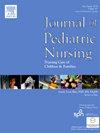慢性负担还是沉默伴侣?1型糖尿病儿童的经历:隐喻与情感分析
IF 2.3
4区 医学
Q2 NURSING
Journal of Pediatric Nursing-Nursing Care of Children & Families
Pub Date : 2025-08-04
DOI:10.1016/j.pedn.2025.07.033
引用次数: 0
摘要
目的本研究旨在探讨1型糖尿病儿童如何通过情感和隐喻分析来概念化自己的病情,解决理解其情感和语言框架的空白。采用DesignA混合方法,将计算情感分析与定性隐喻分析相结合。方法采用混合方法设计。通过半结构化访谈,从79名7-17岁的土耳其T1D儿童中收集隐喻,其中包括“糖尿病就像……因为……”和“如果糖尿病是一种颜色,那将是……因为……”等提示。隐喻反应被编码并分为七类:不可预测性、陪伴性、威胁、控制和管理、身体和情感影响、双重性和对治疗的依赖性。使用Python和NVivo对35个儿童叙事的随机目的子样本进行计算情感分析。结果儿童产生了55个不同的隐喻来描述他们的T1D经历。大多数隐喻反映了糖尿病的负面或负担方面,57%的儿童在他们的叙述中主要表达了负面情绪。14%的人表现出积极的情绪,与韧性和希望有关,而29%的人表现为中性情绪。情绪基调和隐喻类别为儿童T1D的心理负担和适应性应对机制提供了新的视角。结论儿童的隐喻和情感表达凸显了T1D患者生活的复杂性。护理和社会心理干预应同时考虑儿童自身语言所揭示的认知和情感维度,以改善支持和护理。本文章由计算机程序翻译,如有差异,请以英文原文为准。
Chronic burden or silent companion? Experiences of children with type 1 diabetes: A metaphor and sentiment analysis
Aim
This study aimed to explore how children with type 1 diabetes (T1D) conceptualize their condition through sentiment and metaphor analysis, addressing gaps in understanding their emotional and linguistic frameworks.
Design
A mixed approach was employed, integrating computational sentiment analysis and qualitative metaphor analysis.
Method
The study used a mixed-methods design. Metaphors were collected from 79 Turkish children aged 7–17 with T1D through a semi-structured interview including prompts such as “Diabetes is like… because…” and “If diabetes were a color, it would be… because…”. Metaphor responses were coded and grouped into seven categories: unpredictability, companionship, threat, control and management, physical and emotional impact, duality, and dependency on treatment. Computational sentiment analysis was performed on a random-purposeful subsample of 35 children's narratives using Python and NVivo.
Results
Children generated 55 distinct metaphors describing their experiences of T1D. Most metaphors reflected negative or burdensome aspects of diabetes, with 57 % of children expressing predominantly negative emotions in their narratives. Positive emotions, linked to resilience and hope, were observed in 14 % of responses, while 29 % were neutral. The emotional tone and metaphor categories provided insight into both the psychological burden and adaptive coping mechanisms in pediatric T1D.
Conclusion
Children's metaphors and emotional expressions highlight the complexity of living with T1D. Nursing and psychosocial interventions should consider both the cognitive and emotional dimensions revealed in children's own words to improve support and care.
求助全文
通过发布文献求助,成功后即可免费获取论文全文。
去求助
来源期刊

Journal of Pediatric Nursing-Nursing Care of Children & Families
NURSING-PEDIATRICS
CiteScore
3.70
自引率
8.30%
发文量
291
审稿时长
65 days
期刊介绍:
Official Journal of the Society of Pediatric Nurses and the Pediatric Endocrinology Nursing Society (PENS)
The Journal of Pediatric Nursing: Nursing Care of Children and Families (JPN) is interested in publishing evidence-based practice, quality improvement, theory, and research papers on a variety of topics from US and international authors. JPN is the official journal of the Society of Pediatric Nurses and the Pediatric Endocrinology Nursing Society. Cecily L. Betz, PhD, RN, FAAN is the Founder and Editor in Chief.
Journal content covers the life span from birth to adolescence. Submissions should be pertinent to the nursing care needs of healthy and ill infants, children, and adolescents, addressing their biopsychosocial needs. JPN also features the following regular columns for which authors may submit brief papers: Hot Topics and Technology.
 求助内容:
求助内容: 应助结果提醒方式:
应助结果提醒方式:


